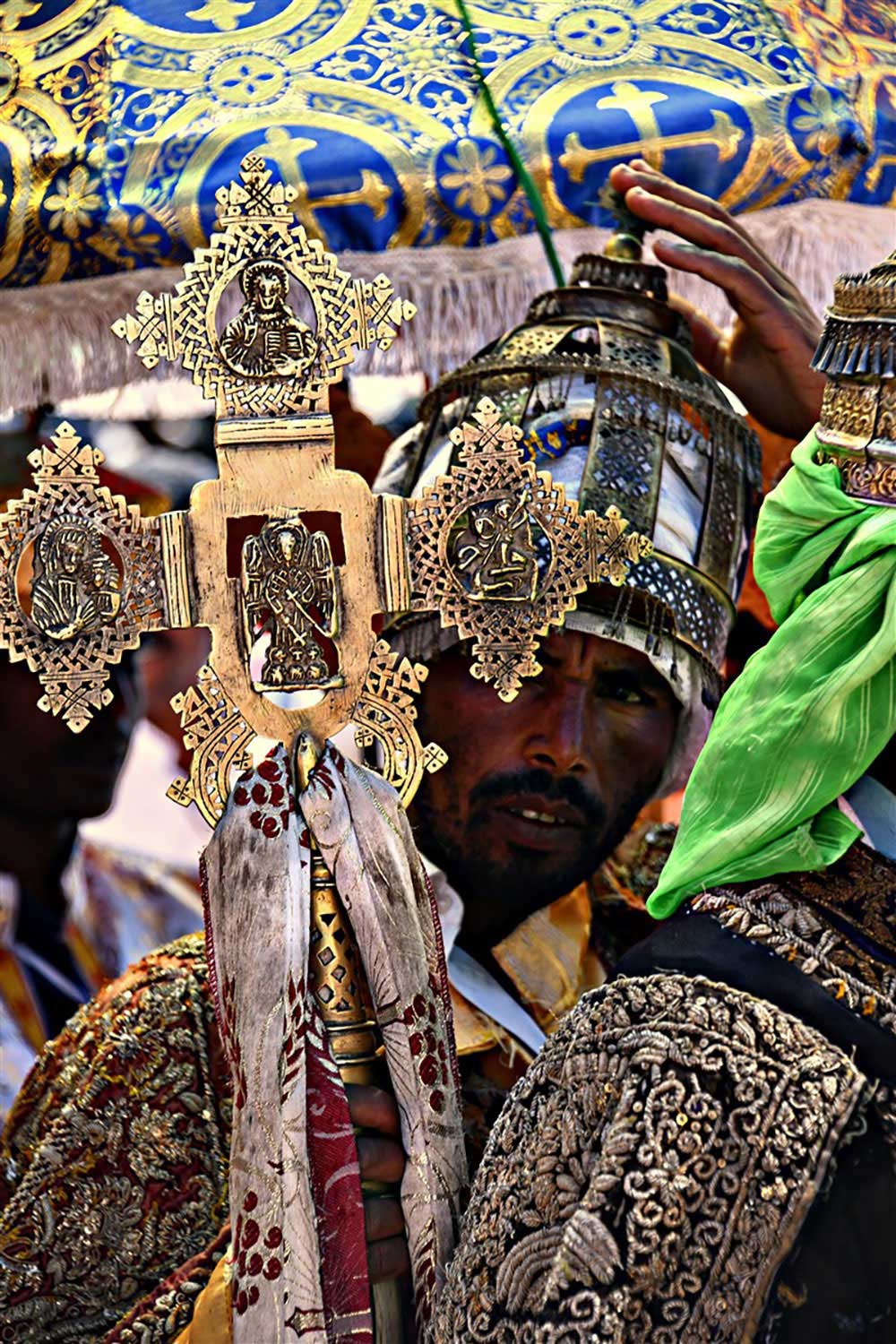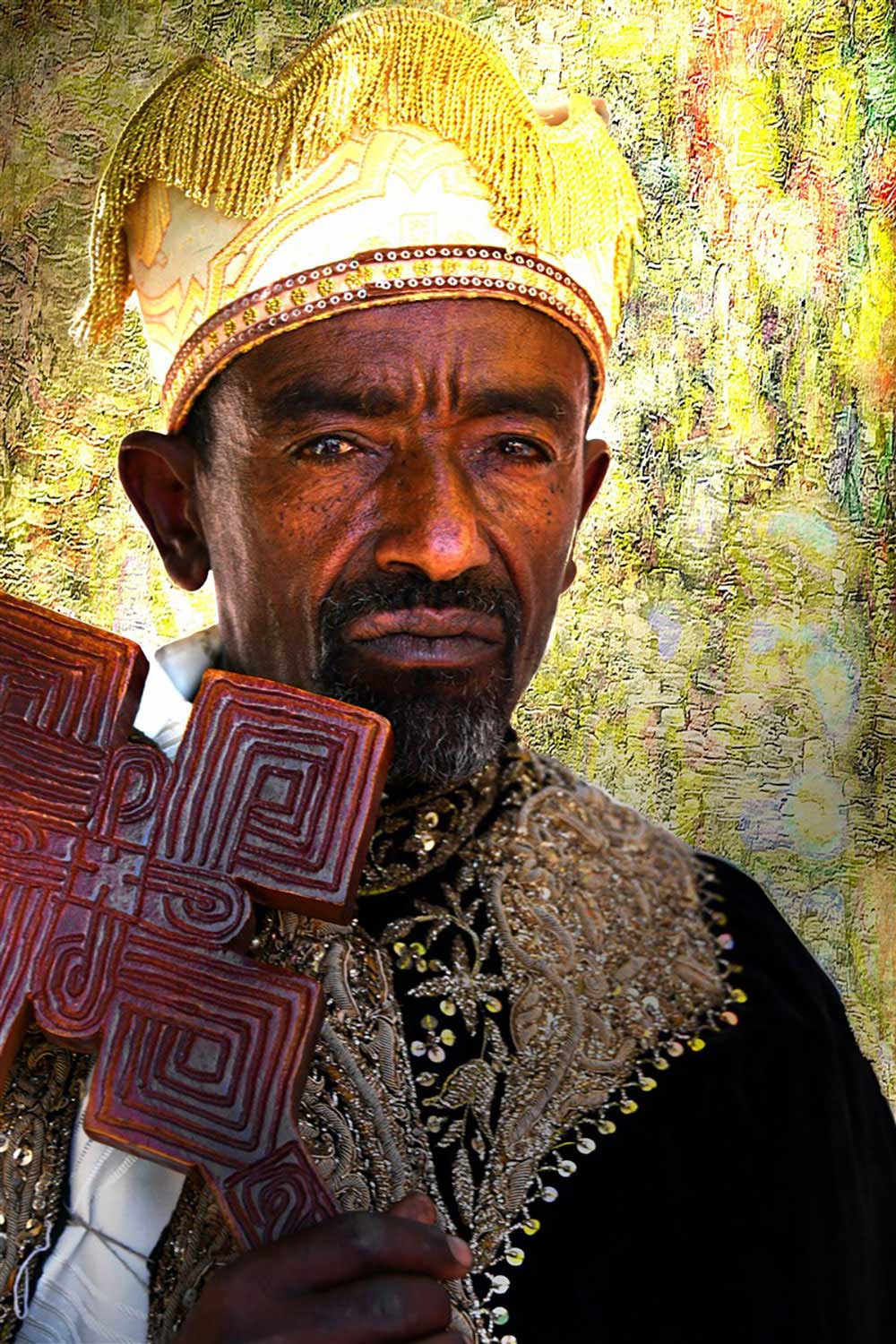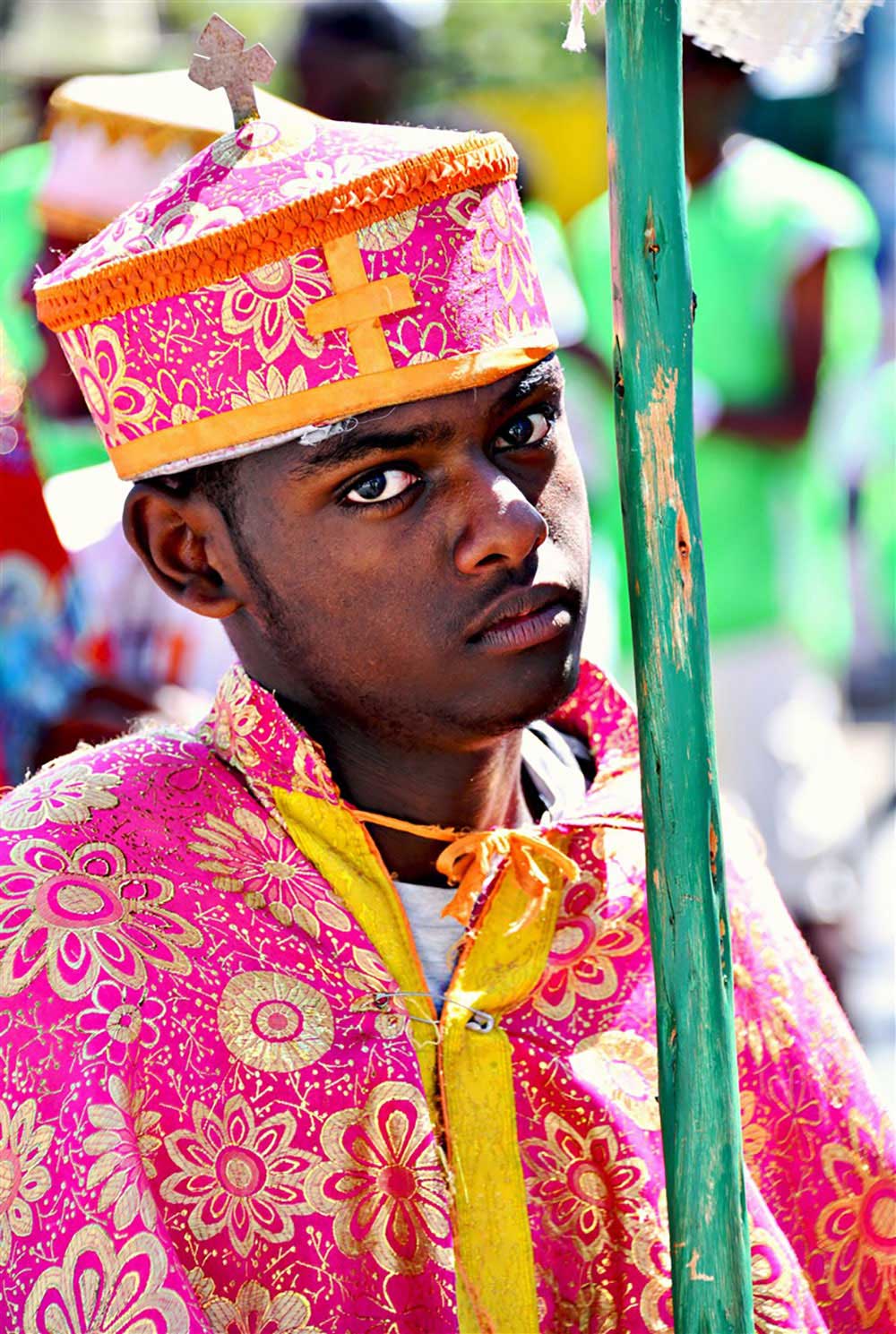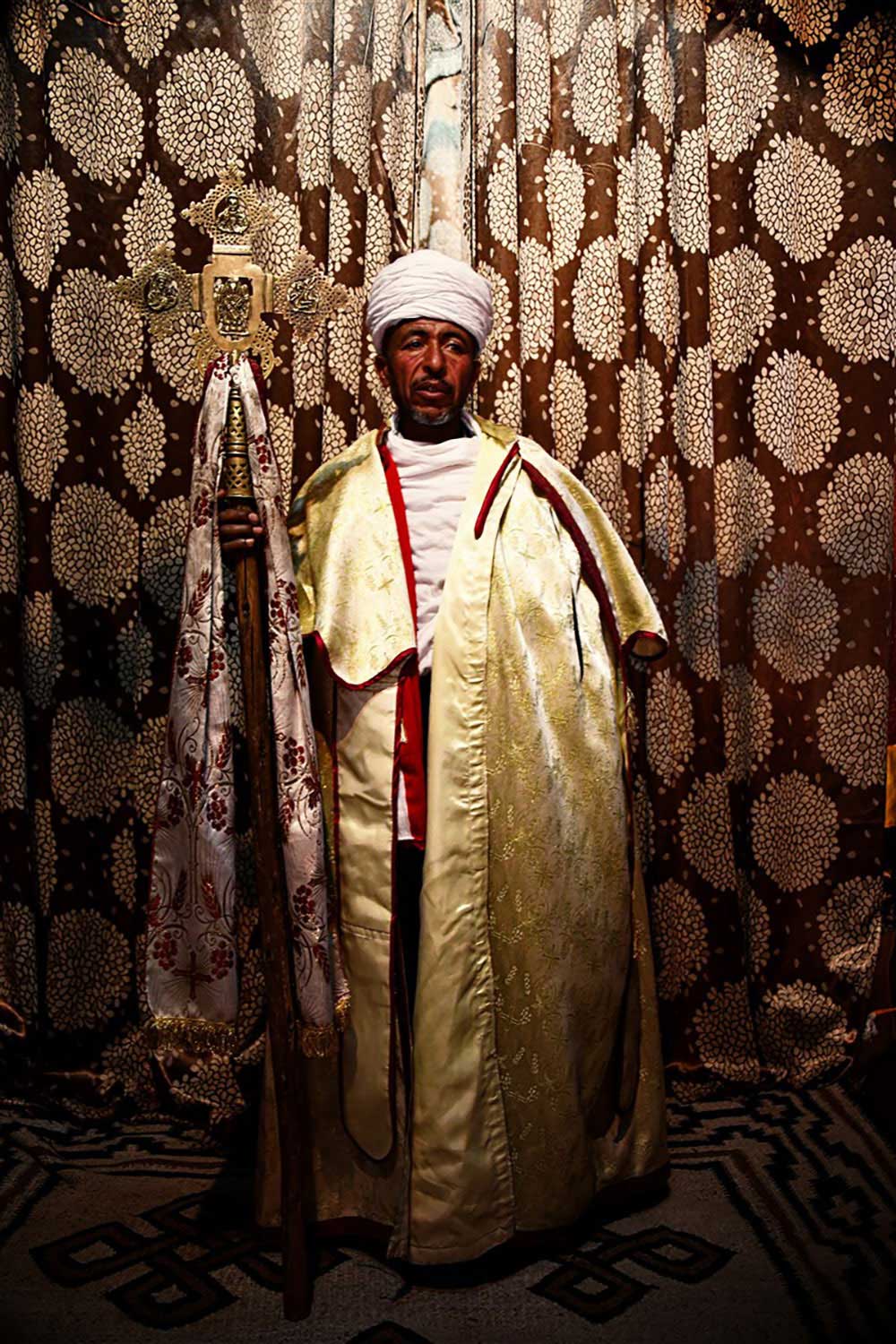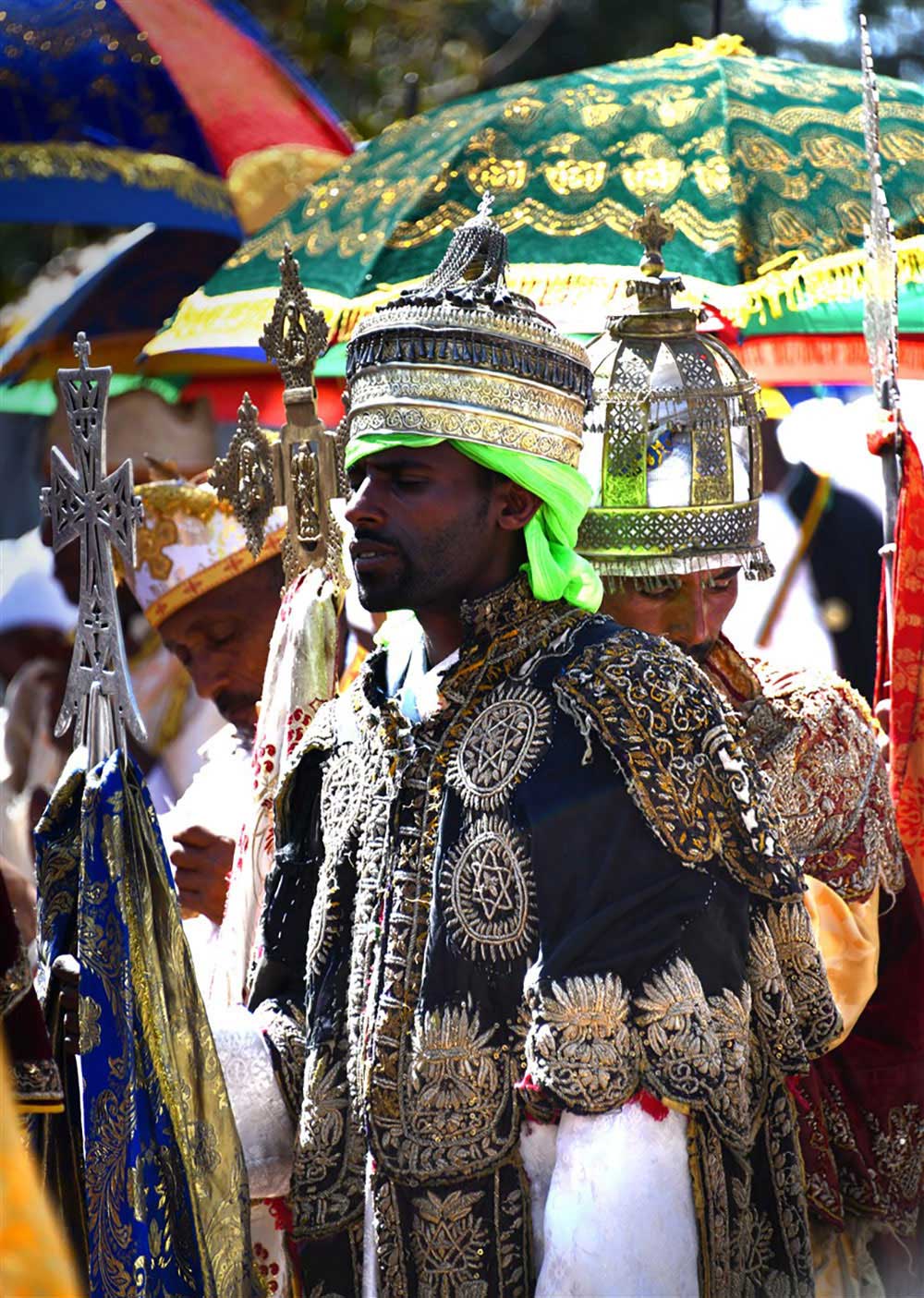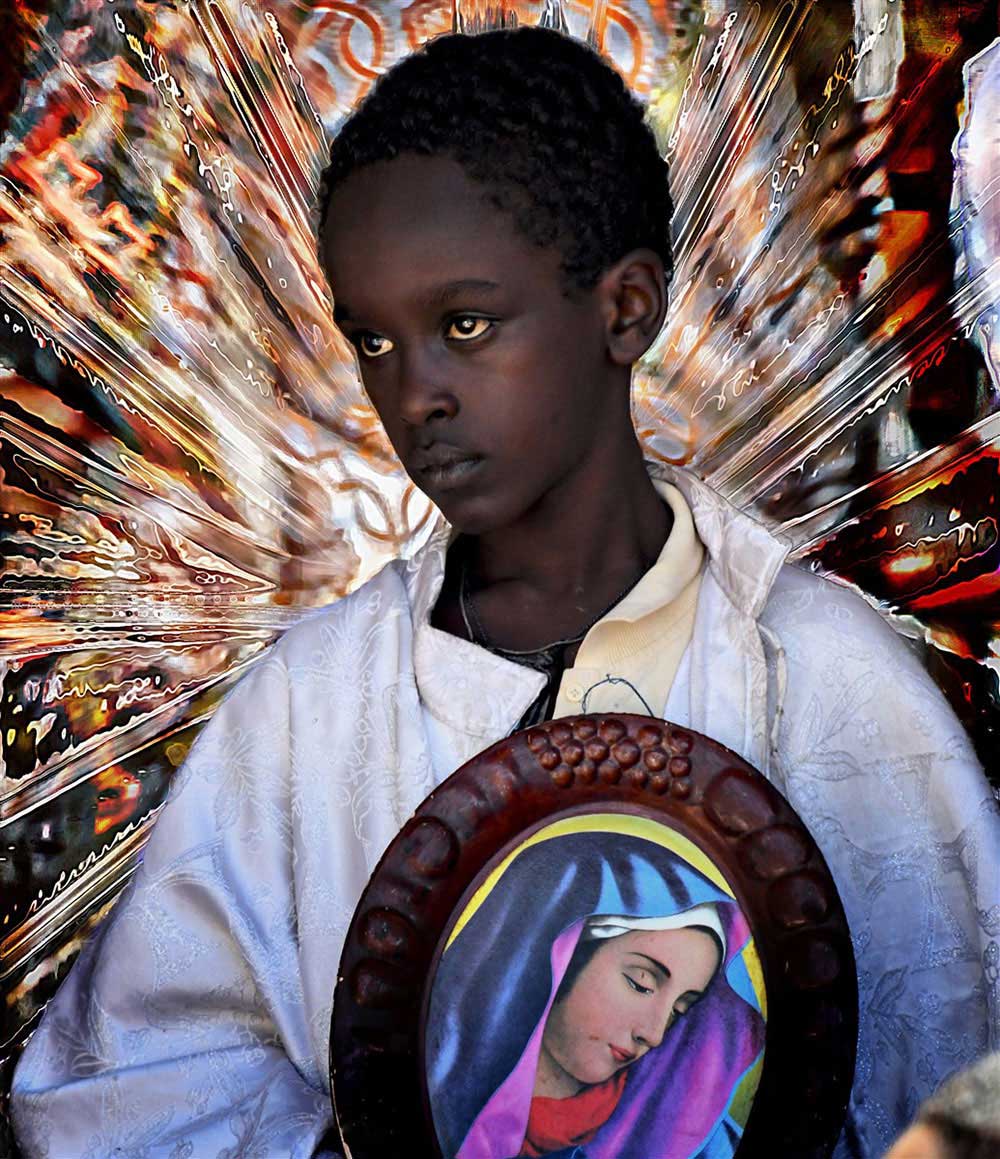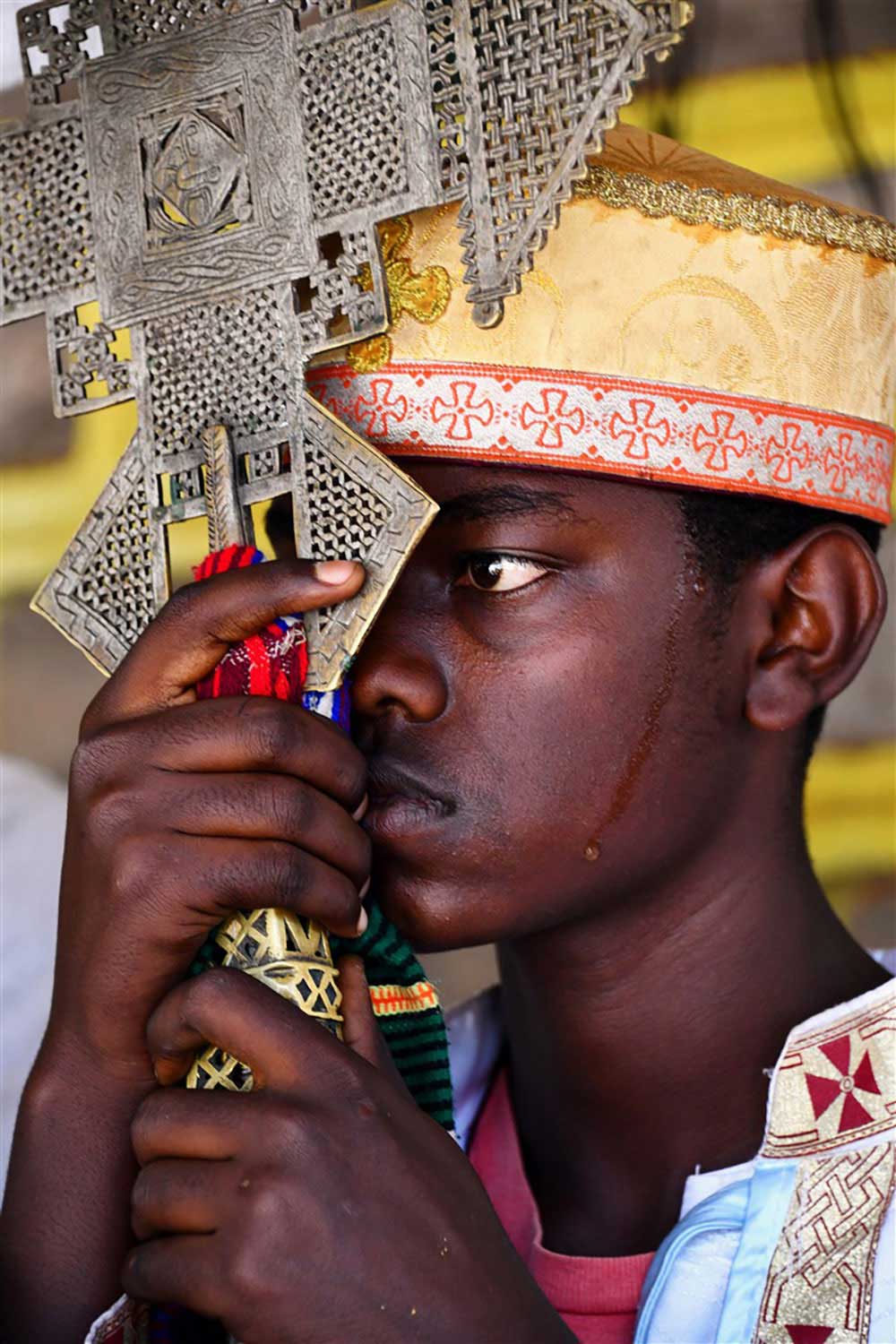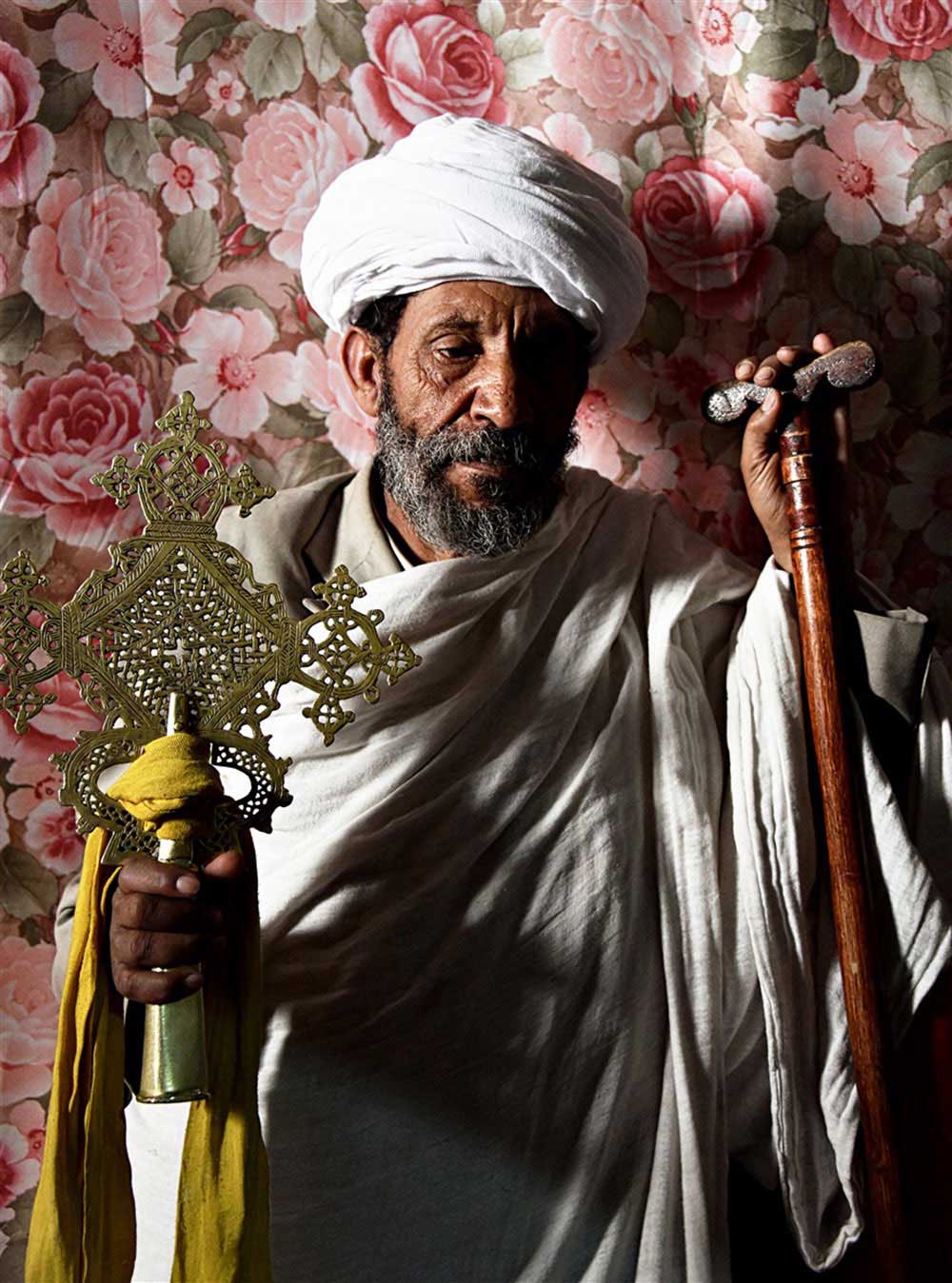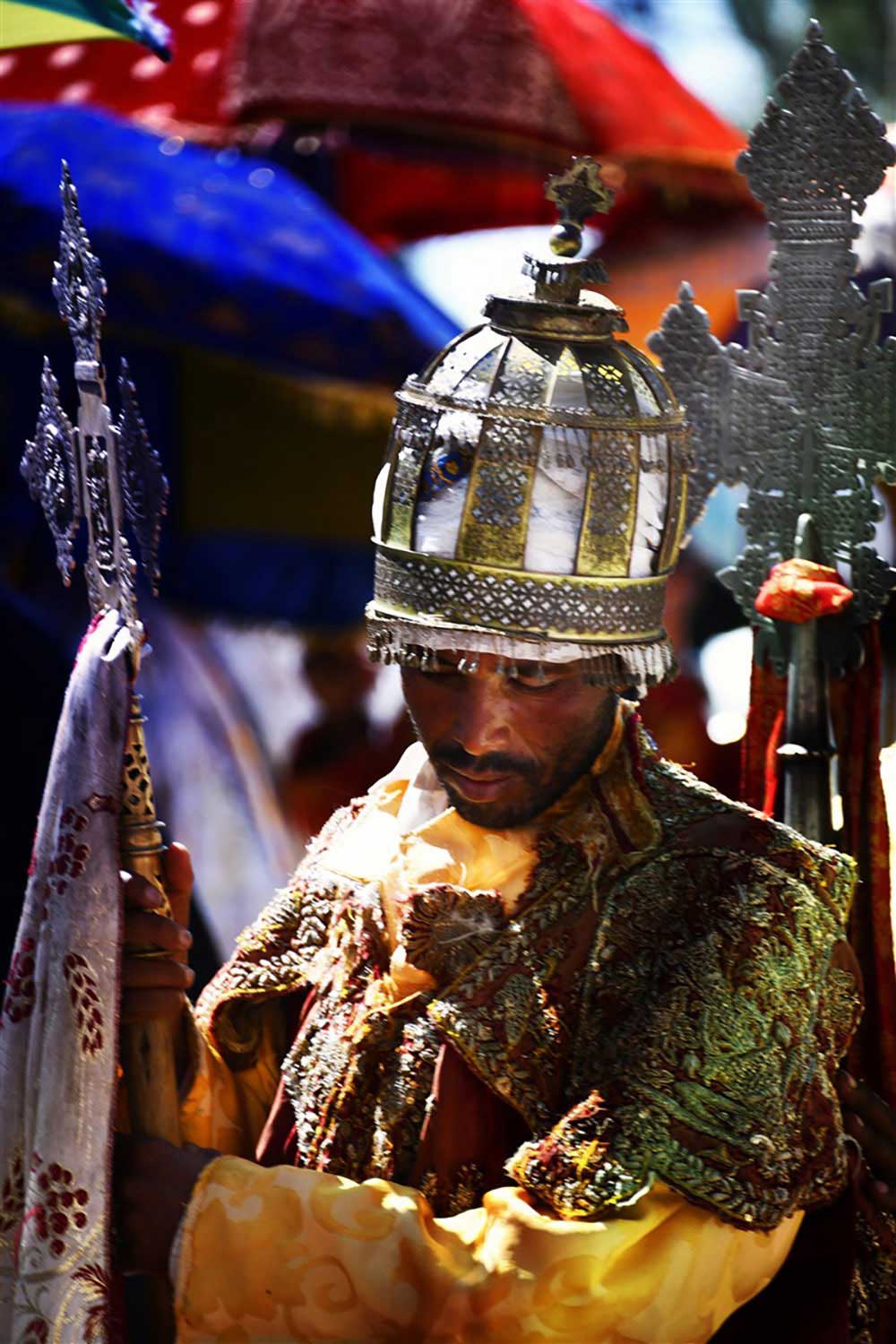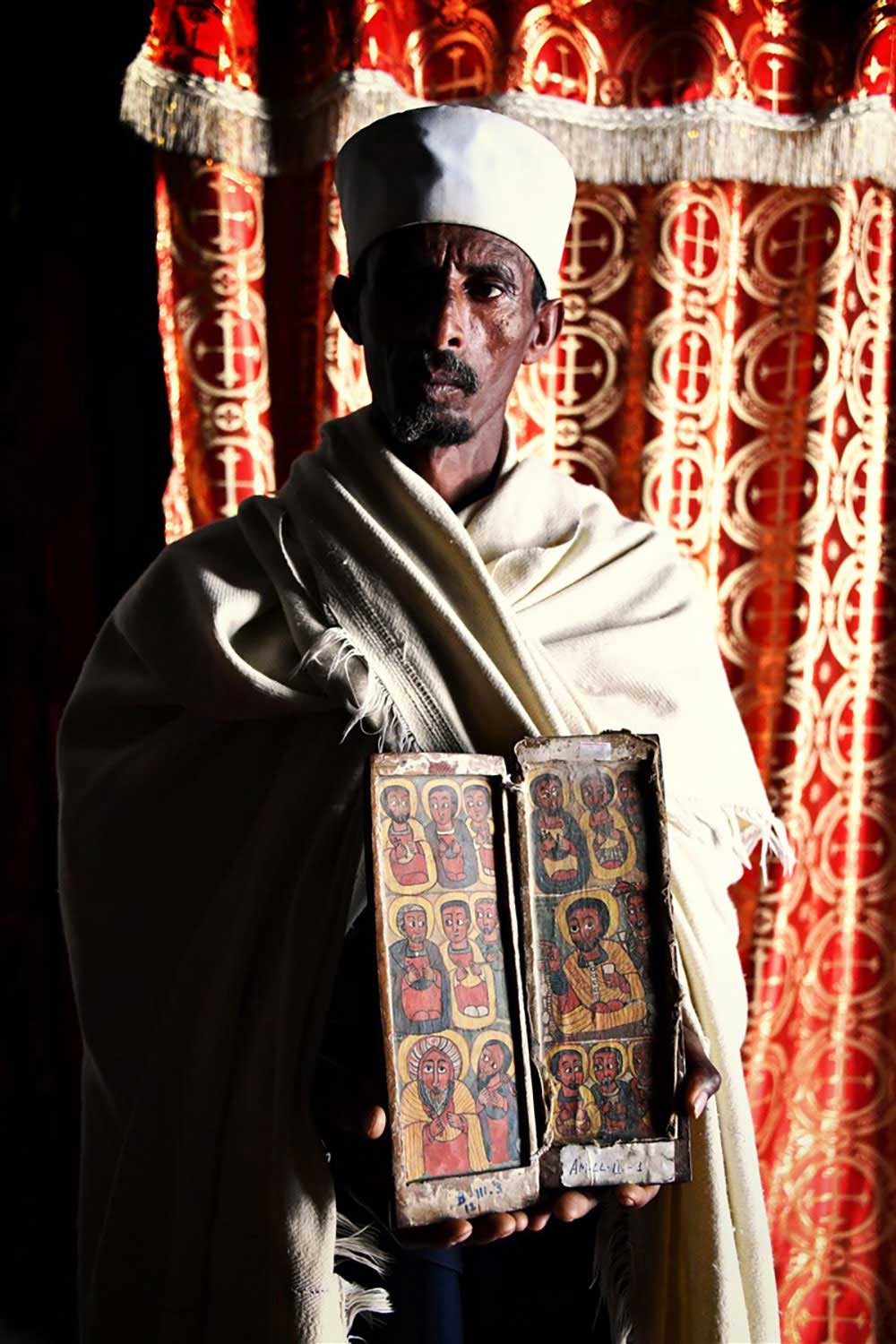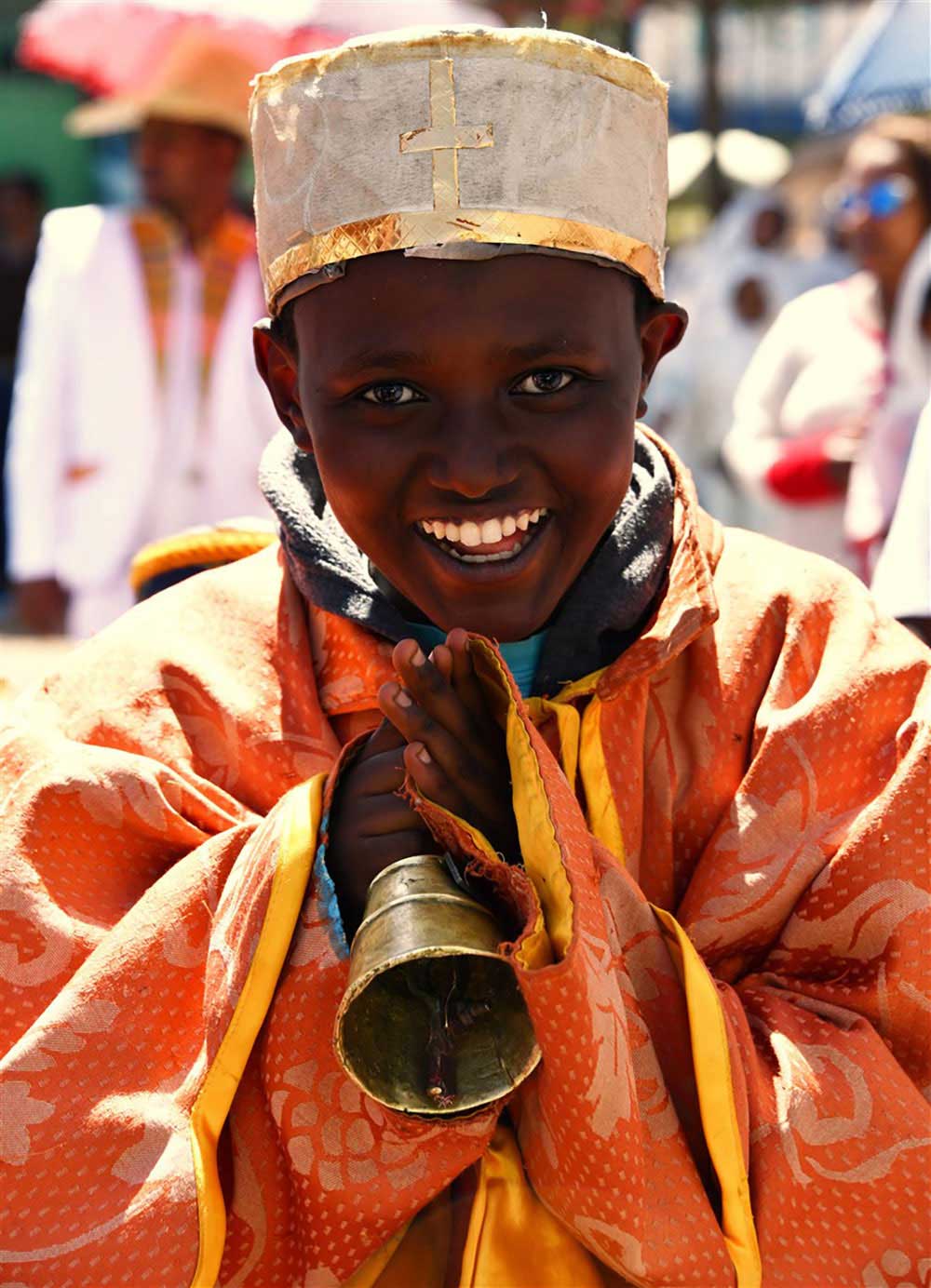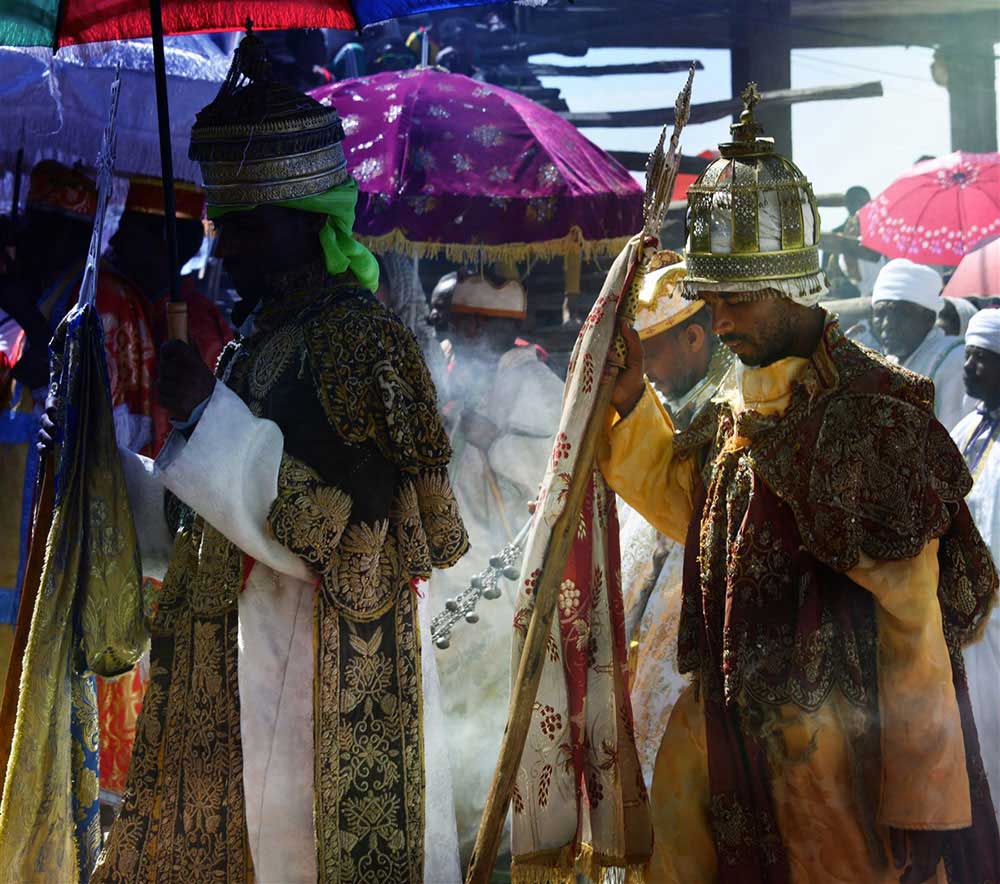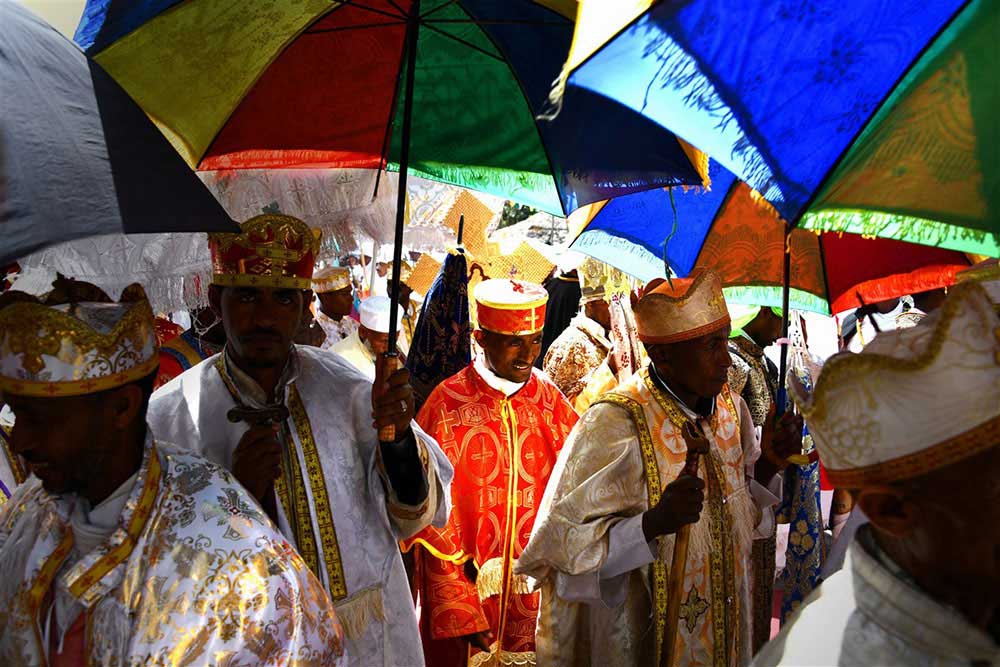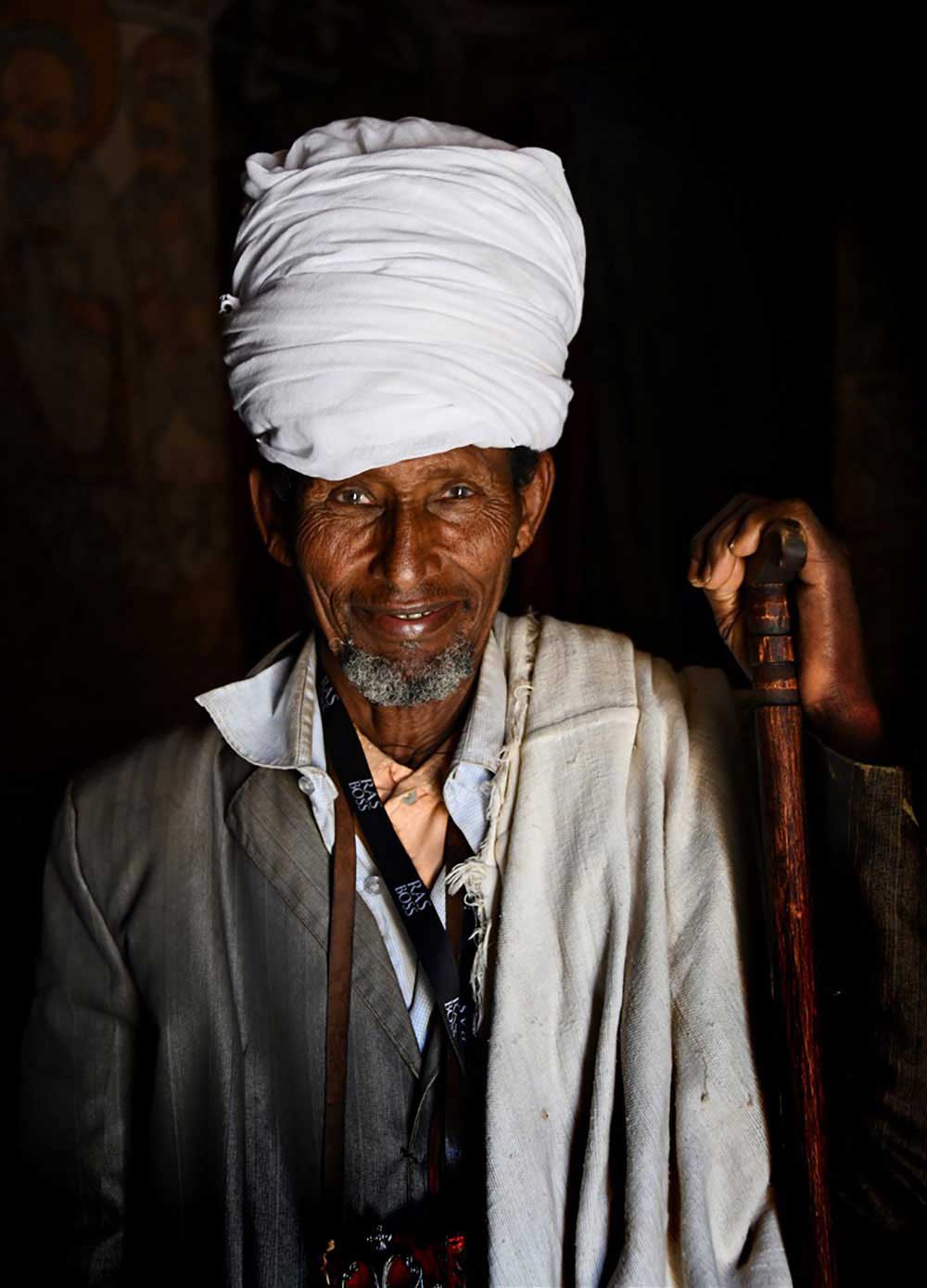Ethiopia became Christian in the IVth century and has kept a very vivid faith. Its Orthodox Church is home to spectacular traditions, with a high number of processions where thousands of people dance and sing in the street for days.
The services of the Ethiopian Church are celebrated in the Ge’ez language; a liturgical language in use since the arrival of Nine Saints who fled persecution by the Byzantine Emperor after the Council of Chalcedon.
The Ethiopian Church has stayed surprisingly close to Judaism: believers do not eat pork and are circumcised. The Churches are modelled on the Temple, with the most sacred part being the Holy of Holies, containing a copy of the Table of the Law. The latter (the ‘tabot’) is carried by the priests in the streets during processions.
In this colorful country, the Church commonly uses the star of David and the Jews have…Monks. The Ethiopian church claims that one of its churches, ‘our lady Mary of Zion (in Axoum), is host to the original Ark of Covenant that Moses carried during the exodus, and that would have been brought back from Jerusalem by King Menelik, son of King Salomon and of the Queen of Sheba.
The clergy is composed of priests, who conduct the religious services and perform exorcisms; deacons, who assist in the services; and debtera, who, though not ordained, perform the music and dance associated with church services and also function as astrologers, fortune-tellers, and healers.
This photographic project has been realized in January 2019, primarily in Northern Ethiopia (where Christianism is more vivid). Group photos were taken during Timkat, the Ethiopian Epiphany, in Addis-Abeba and Lalibela.
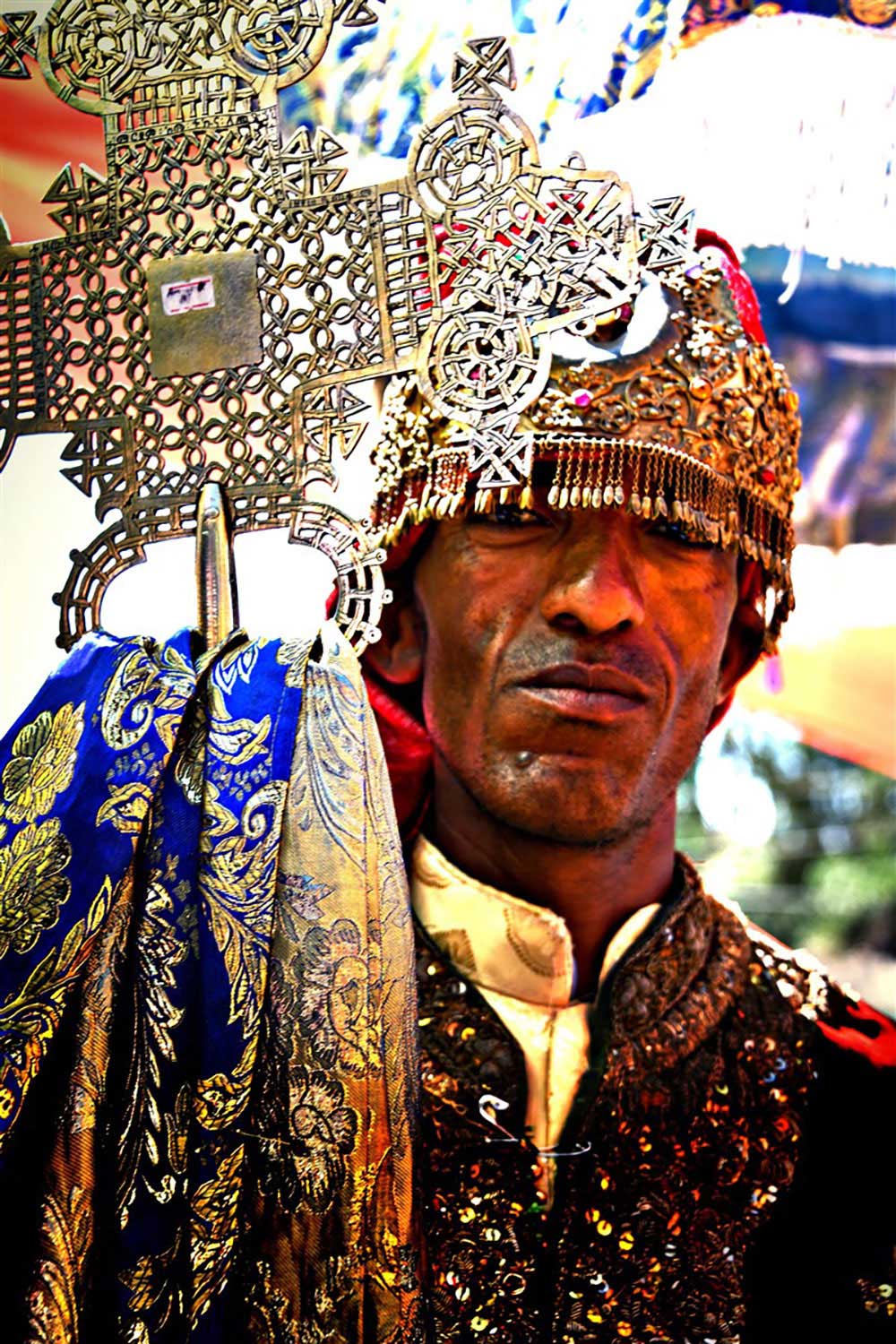
About Benjamin Angel
Benjamin Angel is a French photographer based in Brussels. His work on Jerusalem has recently been published in Belgium by Husson editions (‘People of Jerusalem’, available on www.amazon.fr) and will be exposed in Brussels in June. Benjamin Angel does primarily black and white portraits, with occasional use of colors, as was the case for his Ethiopian series. [Official Website]



